
The 1914 Star, colloquially known as the Mons Star, is a British First World War campaign medal for service in France or Belgium between 5 August and 22 November 1914.

The Indian General Service Medal was a campaign medal approved on 1 January 1909, for issue to officers and men of the British and Indian armies. From 1919, it was also awarded to officers and men of the Royal Air Force, with the Waziristan 1925 clasp awarded solely to the RAF.

The Emergency Reserve Decoration (ERD) was a British military decoration for long service, instituted on 17 November 1952 and given for service up to 1967.

The King George V Coronation Medal was a commemorative medal instituted in 1911 to celebrate the coronation of King George V, that took place on 22 June 1911.

The Australia Service Medal 1939–1945 recognises service in Australia's armed forces, Mercantile Marine and Volunteer Defence Corps during World War II.

The Decoration for Officers of the Royal Naval Reserve, commonly known as the Reserve Decoration (RD) was a medal awarded to officers with at least fifteen years service in the Royal Naval Reserve (RNR) of the United Kingdom. The medal was instituted in 1908.

The Territorial Efficiency Medal (TEM) was a United Kingdom award for long service in the Territorial Army. It superseded the Territorial Force Efficiency Medal when the Territorial Force became the Territorial Army in 1921. It was superseded by the Efficiency Medal in 1930.
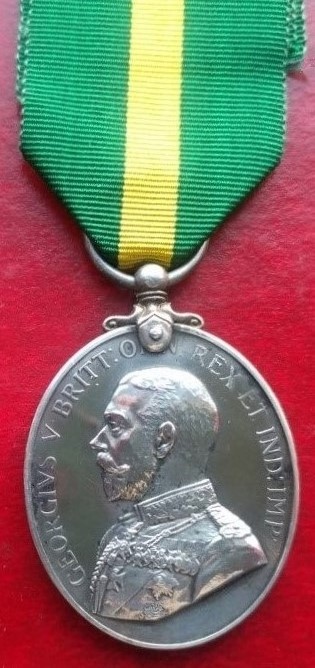
The Territorial Force Efficiency Medal was a United Kingdom award for long service in the Territorial Force between 1908 and 1921.

The Queen's Mediterranean Medal was authorised by King Edward VII and was awarded to Militia troops who had replaced their regular British Army counterparts in the various military garrisons across the Mediterranean, in Gibraltar, Malta and Egypt. This allowed regular troops to be available for the Second Boer War.

The Territorial Force War Medal was a campaign medal awarded to members of the British Territorial Force and Territorial Force Nursing Service who served overseas in World War I. It is the rarest of the five British Great War medals.

The China War Medal was issued by the British Government in 1843 to members of the British and Indian forces who took part in the First Opium War (1839–42). The medal was designed by William Wyon.

The Police Long Service and Good Conduct Medal is a decoration for police officers of the United Kingdom. First instituted in 1951, the medal is presented for twenty aggregate years of service in the police services of the United Kingdom.
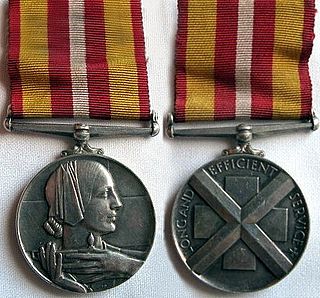
The Voluntary Medical Service Medal is a medal awarded by St Andrew's First Aid and formerly by the British Red Cross. It was instituted in 1932 at the direction of George V.

The Africa General Service Medal, established in 1902, was a campaign medal of the United Kingdom. It was awarded for minor campaigns that took place in tropical Africa between 1900 and 1956, with a total of forty five clasps issued. The medal is never seen without a clasp and some are very rare. Most medals were granted to British led local forces, including the King's African Rifles and the West African Frontier Force. The only campaigns where European troops were present in any numbers were the various Somaliland campaigns,, and in Kenya.
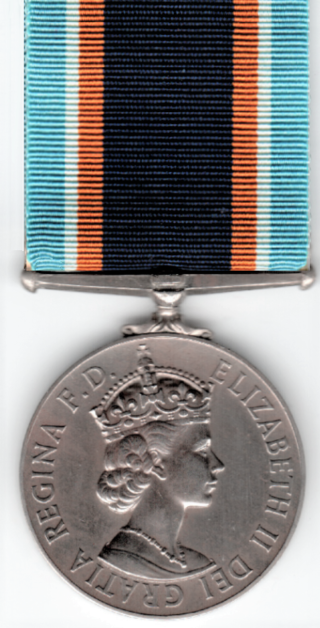
The Ceylon Police Long Service Medal was awarded to police officers in Ceylon of and below the rank of Chief Inspector for completing 18 years of unblemished service. Bars for 25 and 30 years service were also awarded.

The Burma Gallantry Medal (BGM) was a military decoration awarded for acts of gallantry, in both war and peace, by Governor's commissioned officers, non-commissioned Officers and other ranks of the British Burmese military. These included its Army, Frontier Force, Military Police, Royal Naval Volunteer Reserve and Auxiliary Air Force. Clasps, attached to the ribbon, could be awarded to mark further awards of the medal.

H.M. Coastguard Long Service and Good Conduct Medal is a long service medal awarded by the United Kingdom. Awarded for twenty years full or part-time service, with members of His Majesty's Coastguard, Coastguard Rescue Service, Isle of Man Coastguard and auxiliary coastguards eligible.

Delhi Durbar Medals were instituted by the United Kingdom to commemorate the Delhi Durbar where the new Emperor of India was proclaimed, in 1903 for Edward VII, and in 1911 for George V. On both occasions the medals were one and a half inches in diameter and were awarded in both gold and silver. They were worn in date order alongside Coronation and Jubilee medals on the left chest, suspended from a ribbon one and a quarter inches wide. These Royal commemorative medals were worn before campaign medals until November 1918, after which the order of wear was changed, with them now worn after campaign medals and before long service awards.
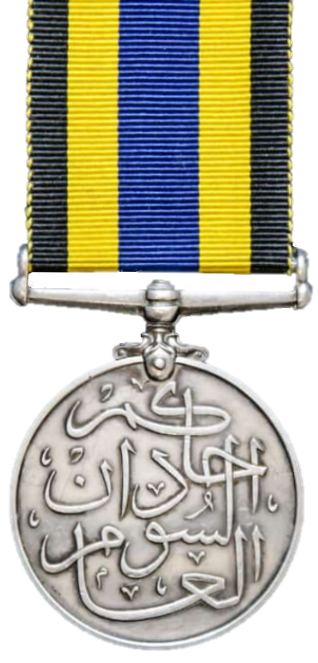
The Sudan Defence Force General Service Medal was a campaign medal instituted in 1933 to reward service in minor operations within the Anglo-Egyptian Sudan. It was last awarded for service in 1941.
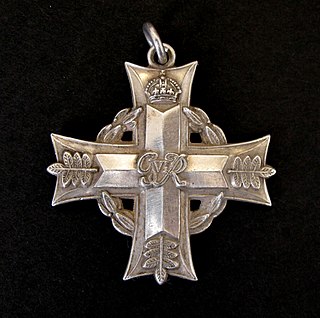
The New Zealand Memorial Cross is awarded to the next of kin of New Zealand service personnel who, since September 1939, have been killed on active service or later died of their wounds.




















